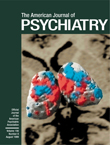The authors and editors of this book have set out to provide a “practical guide to the effective diagnosis and treatment of alcohol and drug addiction disorders.” The book is geared for use by physicians, residents, and medical students as well as nonphysician and nonmedical health care professionals.
This volume is extremely well laid out. Reading the entire book would provide a broad view of the issues involved in the diagnosis and treatment of addictive disorders. The practitioner can also read a specific chapter for the answer to questions relating to the diagnosis or treatment of one aspect of addiction issues.
The editors reference DSM-IV for all of the categories of addictions. This gives the clinician a grounding in the standard nomenclature and diagnostic terminology. The authors also present substantially wider and more useful criteria for the clinician to use as a basis for diagnoses, however. The charts and graphs throughout the book are extremely helpful and useful, whether they focus on the neurophysiology of the addicting agents, the specific doses of treating medications, or the issues of drug interaction.
There are two chapters on the treatment of comorbid medical and surgical complications of addictive substances. This section is very thoughtful and complete in reference to alcohol, cocaine, and marijuana, but it seems a bit sketchy in terms of tobacco. At this juncture, there is certainly a great deal that is known about tobacco comorbidities, and this section could have shown the completeness evidenced elsewhere in the chapter.
The chapter on cultural considerations also could have been more thorough. The subsection on Native Americans is very short and does not reference the important literature on the differences in alcohol reactions in this subgroup. There is no section on Asians and Asian Americans. This subpopulation has both genetic and cultural differences in its reactions to alcohol and the addictive drugs.
The first three parts of this book are quite medical and physiological in their emphasis. Part 4, Treatment Practices, is a very detailed description of Alcoholics Anonymous and the 12-step process. This section of the book is extremely helpful in understanding the background and basis for treatment using the 12 steps; however, there seems to be no adequate segue for the reader to know how to use all of the medical techniques described up to this point in the book as well as these self-help processes. The transition to combining the concepts is not difficult for the sophisticated reader but may be problematic for the student, nonpsychiatrist physicians, or others who do not understand the comprehensive approach to addiction treatment.
Despite these minor issues, I think that this volume should be extremely useful for physicians and other clinicians alike.

